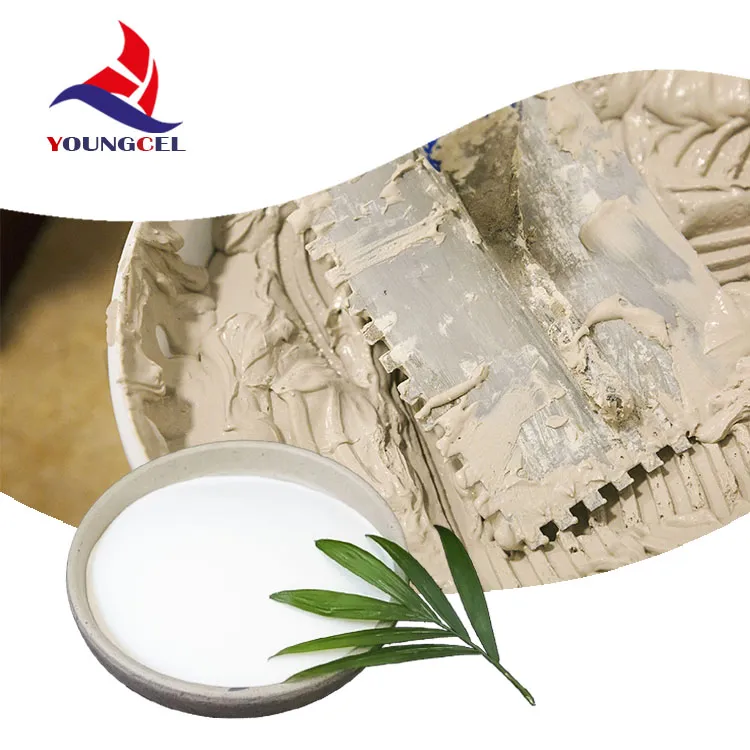HPMC for Detergent Innovations in Cleaning Technology
Hydroxypropyl Methylcellulose (HPMC) is a cellulose-derived polymer that has gained significant traction in various industries, particularly in the formulation of cleaning products like detergents. Its unique properties make it an ideal ingredient for enhancing the efficiency and effectiveness of detergents, playing a crucial role in modern cleaning technology.
Understanding HPMC
HPMC is a synthetically modified cellulose that exhibits excellent film-forming, thickening, and binding properties. It is produced by substituting hydroxypropyl and methyl groups into cellulose, which helps to make it soluble in water and enables various functional characteristics. HPMC is non-toxic, biodegradable, and has a low environmental impact, making it a favorable choice not only for cleaning products but also in pharmaceutical and food applications.
The Role of HPMC in Detergent Formulations
In detergent formulations, HPMC serves several essential functions
1. Thickening Agent HPMC acts as a thickener, increasing the viscosity of liquid detergents. This is particularly important for the shelf stability of products, making them more user-friendly as they can be easily dispensed without losing consistency.
2. Stabilizing Agent HPMC can help stabilize emulsions and suspensions in detergent formulations. This stabilization ensures that the product remains uniform and effective over its shelf life, preventing separation of ingredients that can decrease cleaning efficacy.
3. Enhancing Performance As a film-forming agent, HPMC enhances the performance of detergents by improving the interaction between the detergent and the surface being cleaned. It helps create a protective layer on fabrics, which not only aids in maintaining colors and brightness but also allows for easier stain removal during washing.
4. Reducing Surface Tension HPMC can modify the surface tension of water, allowing detergents to spread more effectively over surfaces. This property enhances the detergent's ability to penetrate dirt and grime, leading to more thorough cleaning results.
hpmc for detergent

5. Eco-Friendly Alternative With the growing concern over the environmental impact of cleaning products, HPMC stands out as a biodegradable component. Its use in detergents aligns with the trends toward sustainability and eco-friendliness in consumer products.
Applications of HPMC in Different Types of Detergents
HPMC is versatile and can be incorporated into a variety of detergent types, including liquid, powdered, and tablet forms. In liquid detergents, it helps maintain a uniform consistency and improves pourability. For powdered detergents, HPMC helps in granulation, ensuring that the particles do not clump together. In tablet formulations, it serves as a binder, providing structural integrity to the tablets.
Furthermore, HPMC is compatible with various surfactants and additives, making it easy to integrate into existing formulations without adverse interactions. This compatibility allows manufacturers to innovate continuously, creating products that meet consumer demands for both performance and environmental responsibility.
Future Trends and Innovations
The future of HPMC in the detergent industry looks promising, as manufacturers increasingly seek solutions that cater to the eco-conscious consumer. With ongoing research into optimizing formulations that leverage the benefits of HPMC, the industry is likely to see the introduction of new products that boast enhanced efficiency and reduced environmental impact.
Incorporating natural ingredients into cleaning products is also a growing trend. HPMC offers a bridge between the need for effective cleaning solutions and the demands for sustainability. Innovations in this area may lead to the emergence of hybrid formulations that utilize HPMC in combination with other natural compounds to maximize cleaning efficacy while remaining gentle on the environment.
Conclusion
In summary, Hydroxypropyl Methylcellulose is a crucial ingredient in the production of effective and sustainable detergents. Its properties as a thickening agent, stabilizer, and performance enhancer make it indispensable in the formulation of high-quality cleaning products. As the industry moves toward greener alternatives, HPMC will likely play a significant role in shaping the future of laundry and cleaning technologies. As consumers become more environmentally conscious, the demand for innovative detergent formulations that utilize HPMC is expected to rise, heralding a new era in cleaning efficiency and sustainability.
-
Rdp Powder: Key Considerations for Wholesalers in the Building Materials IndustryNewsJul.08,2025
-
Key Considerations for Wholesalers: Navigating the World of Hpmc - Based ProductsNewsJul.08,2025
-
Hpmc Detergent: Key Considerations for WholesalersNewsJul.08,2025
-
Key Considerations for Wholesalers: China Hpmc For Tile Adhesive, Coating Additives, Concrete Additives, and MoreNewsJul.08,2025
-
Crucial Considerations for Wholesalers: Navigating the World of Construction MaterialsNewsJul.08,2025
-
Key Considerations for Wholesalers Sourcing Additive For Cement, Additive For Concrete, Additive For Putty from Additive Manufacturer Shijiazhuang Gaocheng District Yongfeng Cellulose Co., Ltd.NewsJul.08,2025




